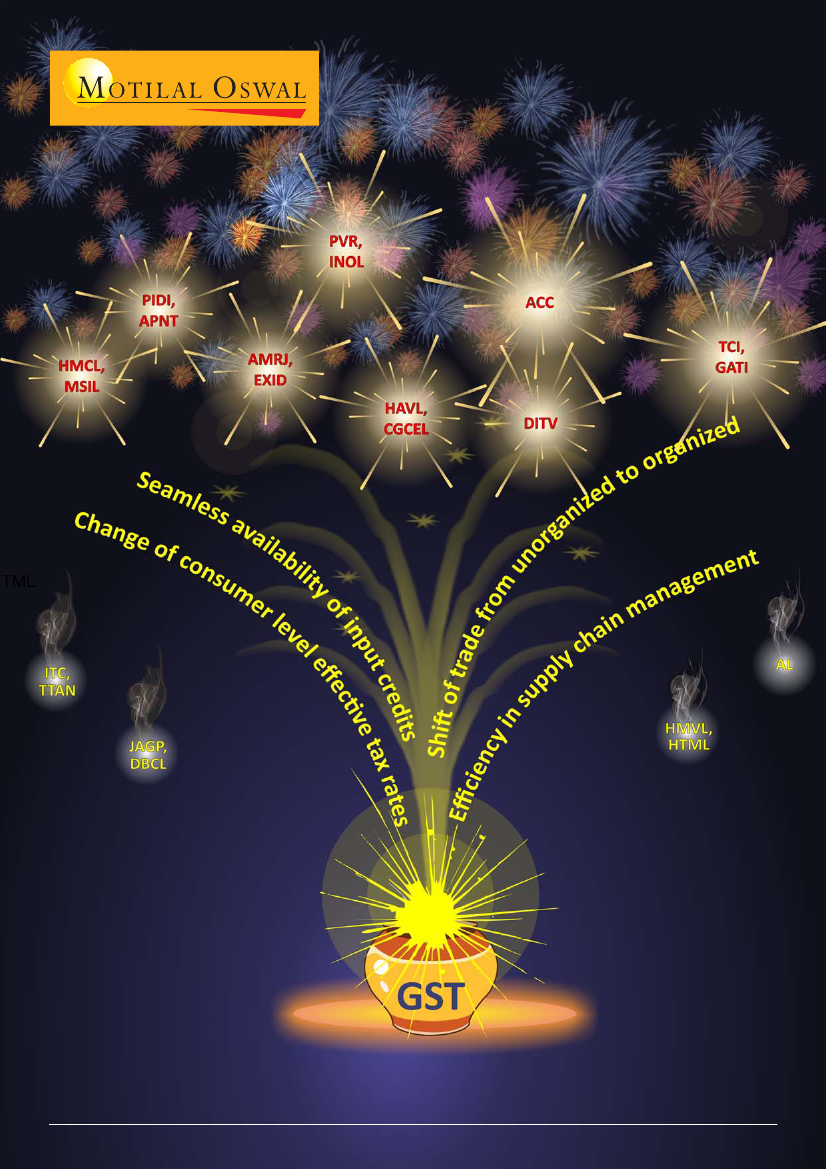
Thematic | July 2016
GST
Ushering in a new era
Sandeep Gupta
(S.Gupta@MotilalOswal.com); +91 22 39825544 /
Nikhil Gupta
(Nikhil.Gupta@MotilalOswal.com); +91 22 3982 5405
Somil Shah
(Somil.Shah@MotilalOswal.com); +91 22 3312 4975 /
Mehul Parikh
(Mehul.Parikh@MotilalOswal.com); +9122 3010 2492